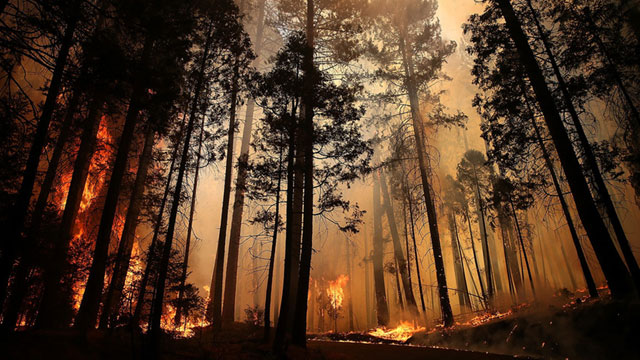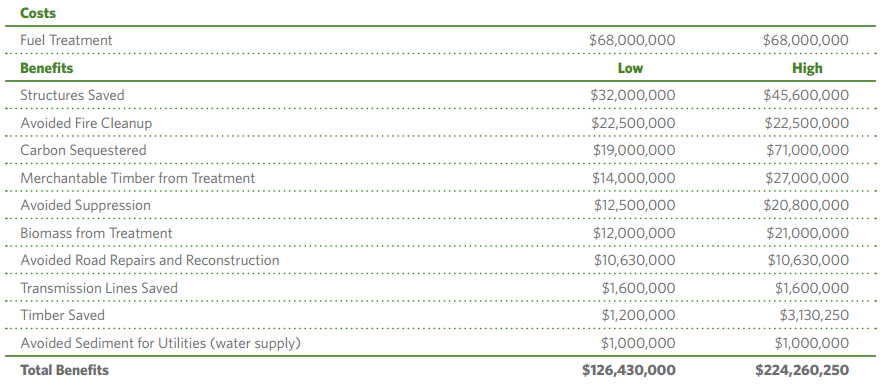
A new study from the U. S. Forest Service and two environmental groups finds that investing in forest management could shrink the size of wildfires and save California hundreds of millions of dollars.
“It’s a classic case of pay me now, or pay me a lot more later when the big fires occur,” says David Edelson, the Sierra Nevada Project Director at The Nature Conservancy and a primary author on the report.
Scientists from The Nature Conservancy, the Sierra Nevada Conservancy and the Forest Service concluded that forest management can save two to three times what it costs to fight and clean up after fires, and shrink the size and intensity of fires up to 75 percent.
The report recommends two steps to manage forests: Thin the undergrowth by cutting down smaller trees so they won’t be able to carry the fire up into the canopy; and conduct prescribed burns to clear the underbrush.
“By having frequent low-severity fires the underbrush and small trees cleared out, and the risk of these kinds of destructive megafires was much lower,” says Edelson. “Currently, we’re robbing Peter to pay Paul. When there’s a huge fire, we take the money away from the pots that are used to reduce wildfire risk. We are in a negative feedback loop, and we’ve gotta stop doing that.”
